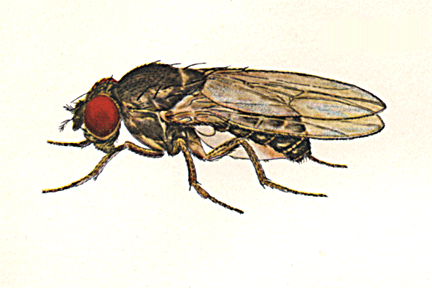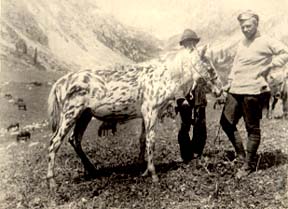Notes for Understanding
Evolution - Chapter 6
Click link to return to Biology 404
Schedule
or back to
Chapter 5 or ahead to Chapter
7
General guide on these review questions here
Notes for Chapter 6: Concept of Selection
Introduction
I. Selection Against Recessive Defects
Key
Terms: complete selection, recessive trait
RQUE6.1: Using the formula on UE:62, with the
initial value (q0) of 0.4, compute the frequency of a recessive allele after
ten generations (q10).
RQUE6.2: Why do harmful recessive traits tend
to stay in a population once they get rare through the action of selection?
II. Significance of the Heterozygote
RQUE6.3: If only one out of about 2,500 individuals
are afflicted with cystic fibrosis disease (i.e., they are homozygous for recessive
trait), why is there still four chances in 100 that a person chosen at random
is a carrier for the gene?
III. Interplay of Mutation and Selection
RQUE6.4: If complete selection operates against
a trait one would expect, in theory, that such a trait should eventually
be lost. So why is it that such traits are often persistent in real populations?
RQUE6.5: Why do harmful high-energy radiations
and improvements in healthcare both tend to promote the increase of deleterious
recessive alleles?
IV. Partial Selection
Key Terms: partial selection, lethal
vs. semi-lethal vs. subvital mutant genes, sterile vs. semi-sterile vs. slightly
less fit individuals, selection intensity, s (= selection coefficient)
RQUE6.6: What is the expectation for the persistence
of an allele as the selection coefficient decreases?
V. Selection Against Dominant Defects
Key Terms: retinoblastoma (cancer of
the eye)
RQUE6.7: What differences must be considered
when one is investigating a harmful dominant genetic allele (e.g., for
retinoblastoma), in contrast to the recessive alleles considered above?
VI. Concealed Variability in Natural Populations

sourse
of image
Featured Organism: Drosophila pseudoobscura
Links: 1
- 2 - 3
- 4
Drosophila spp. (other species in same
genus)
Links: 1 - 2
- 3
- 4 - 5
- 6 - 7
- 8
- 9
 Featured
Scientist: Theodosius Dobzhansky
Featured
Scientist: Theodosius Dobzhansky
Source of
image
Links: 1
- 2
- 3
- 4
- 5
- 6
RQUE6.8: What was the first experimental evidence
that, as predicted, that typical populations of organisms harbor an enormous
store of recessive deleterious alleles?
VII. Genetic Load in Human Populations
RQUE6.9: Are humans exempt from such problems?
VIII. Selection Relaxation in Humans
IX. General Effects of Selection
Key Terms: directional vs. stabilizing
vs. disruptive selection
RQUE6.10: Contrast, with an example, the following
three
modes of selection: directional, stabilizing, and disruptive.
X. Natural Selection and Pregnancy Loss
Click link to return to Biology 404
Schedule
or back to Chapter 5 or ahead to Chapter
7
This page created 8/16/01 © D.J. Eernisse, Last Modified 2/18/03, Links
Last Completely Checked 2/18/03
 Featured
Scientist: Theodosius Dobzhansky
Featured
Scientist: Theodosius Dobzhansky